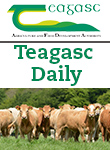
Currently the suckler beef unit at Gurteen College has 79 sucker cows and split calving with 43 spring calving cows and 36 autumn calving cows. The unit aims to educate students on the running of a sustainable drystock business. Teagasc Drystock Specialist Catherine Egan gives an update on the enterprise
- Date
- 26 June 2020
- Type
- Media Article
On this week’s Let’s Talk Dairy webinar, host Stuart Childs, Teagasc Dairy Specialist was joined by a panel of dairy professionals and specialists to discuss Careers in Dairy Farming. An overview was given of the NEFERTITI project along with advice on collaborative pathways for dairy farmers and establishing share farming arrangements. Two farm managers also gave an insight into their backgrounds and how they got to their positions today
- Date
- 26 June 2020
- Type
- Event Proceeding

Following recent rain grass has started to grow again in most areas. What is the best way to manage the grass growth? Grass 10 advisor John Douglas has advise on keeping the focus on quality.
- Date
- 26 June 2020
- Type
- Media Article
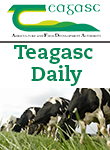
John Ryan, participant of the Teagasc/ Glanbia Future Farm Programme farms in Boulick, Gornathoe, Co. Tipperary. On the 18th June, John's Teagasc Advisor Sandra Hayes caught up with John to get an update on how he was coping after the dry period in May.
- Date
- 25 June 2020
- Type
- Media Article
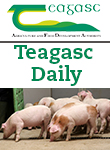
Video in a series by the Teagasc Pig Development Department. Tomas Ryan farm manager in the Teagasc Pig Research Facility gives us an update on what's been happening in the unit.
- Date
- 25 June 2020
- Type
- Media Article
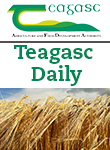
Now is a good time to walk your crops, assess some of the management decisions made and review what worked well and what you might change for next year. Tillage specialist Ciaran Collins has some advice
- Date
- 25 June 2020
- Type
- Media Article
The Sustainability of Irish Agriculture Webinar which took place on Wednesday, 23rd June. Dr. Cathal Buckley, Teagasc provided an overview of the latest sustainability assessment for Irish agriculture, covering Economic, Social and Environmental Metrics.
- Date
- 24 June 2020
- Type
- Event Proceeding

It is projected that during 2020 Ireland will produce up to 8.8 billion litres of milk; this will require approx. 370 GWh of electricity. On farm dairy electricity related CO2 emissions may be 162,000 tonnes by the end of 2020 unless mitigation strategies are implemented. Teagasc Energy Specialist Barry Caslin has some advice
- Date
- 24 June 2020
- Type
- Media Article

Ross and Amy Jackson are farming organically in Lacka, Carrig, Co Tipperary. A farm walk was due to take place on their farm. Organic Specialist Elaine Leavy got an update from Ross and Amy.
- Date
- 24 June 2020
- Type
- Media Article
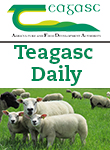
Breeding ewe replacements from within your own flock has a number of advantages including allowing you to breed the best performing ewes in the flock with a high genetic merit maternal sire. Damian Costello, Sheep Specialist, has more information.
- Date
- 23 June 2020
- Type
- Media Article
